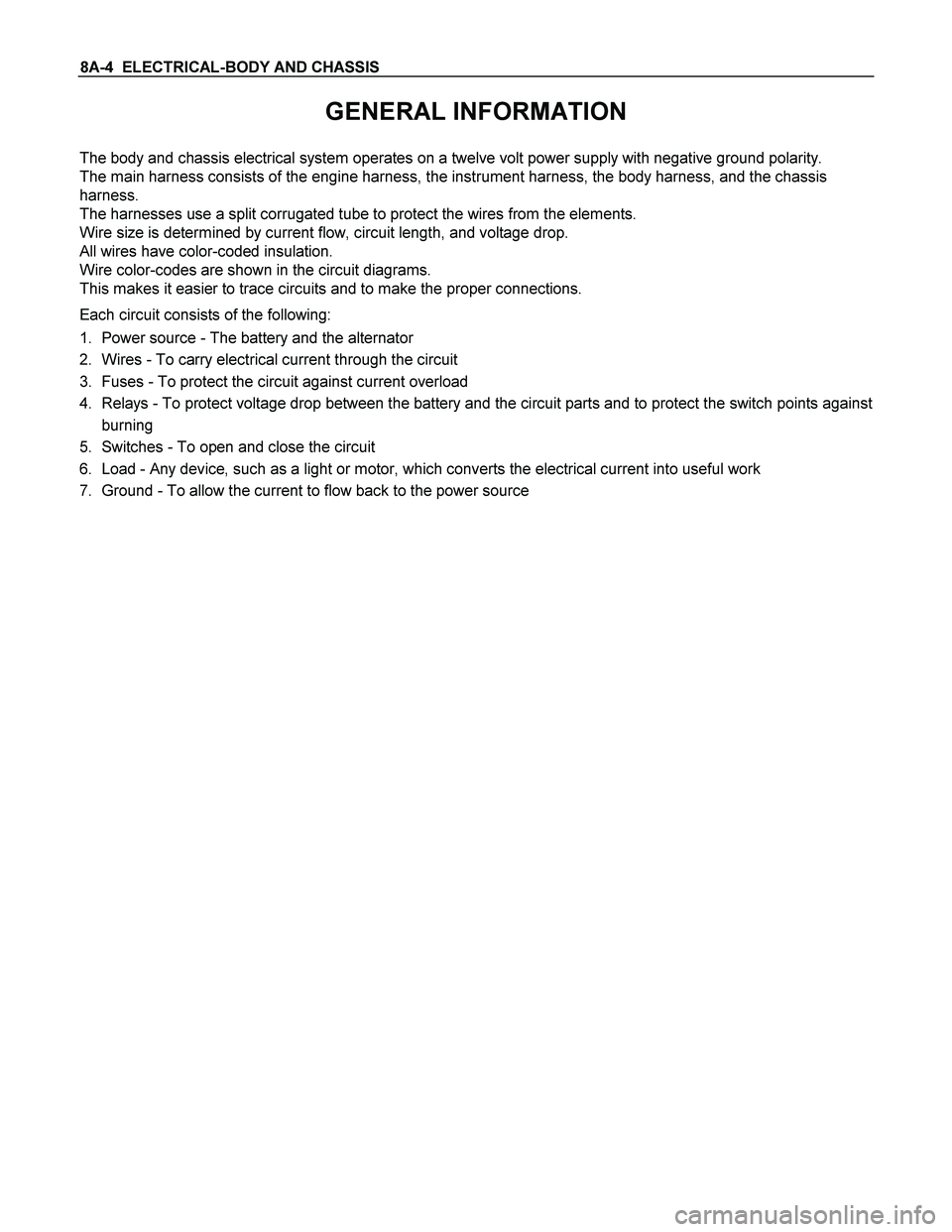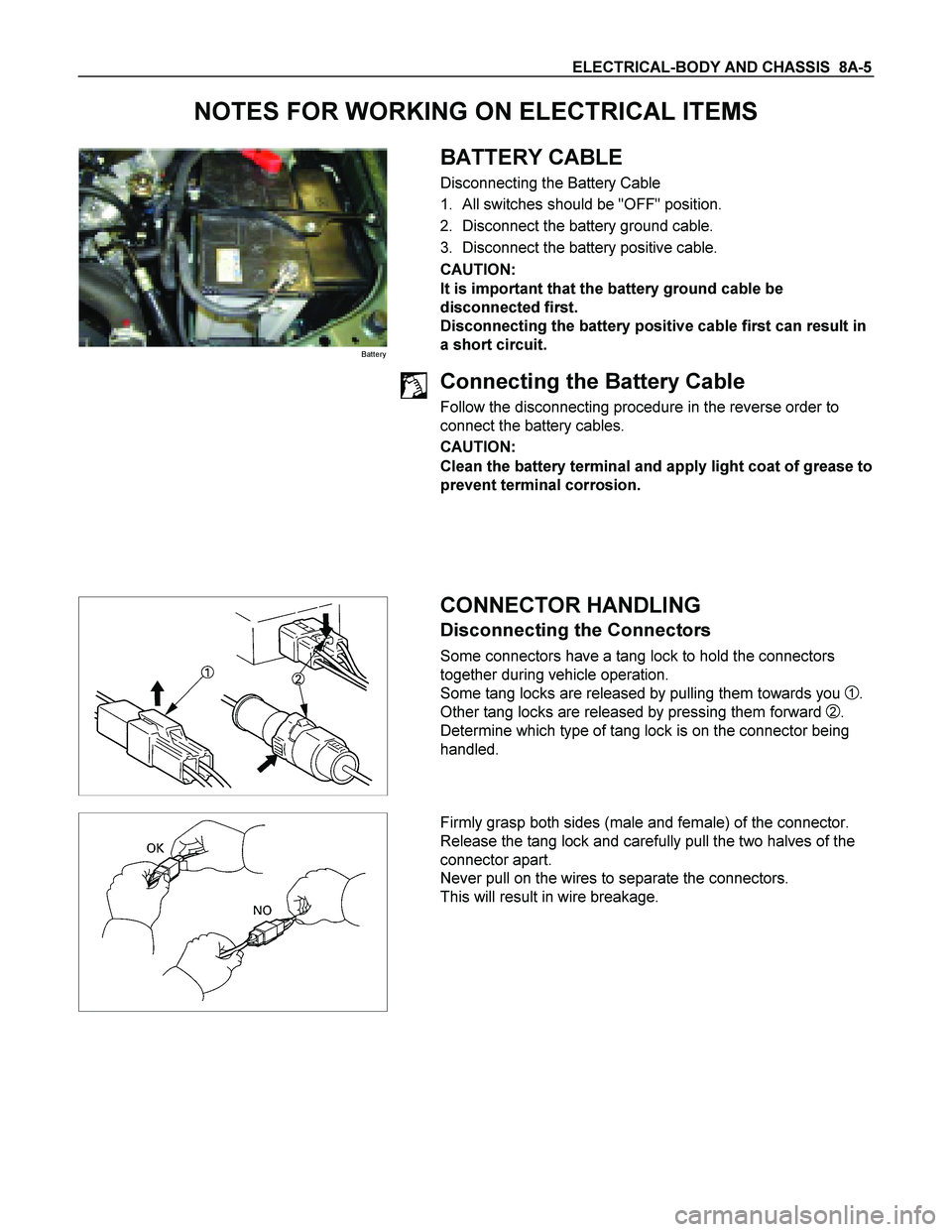Page 531 of 4264
CAB 10-23
RTW3A0SH000401
Important Operations
1. Switch Bezel/Window Regulator Handle
�
Remove the 2 screws and disconnect the connector.
�
To remove the regulator handle, remove the clip at the
root of the handle by using wire.
2. Power Window Switch
�
Pry the 4 clip positions.
3. Bezel
�
Remove the screw.
RTQ3A0SH000501
4. Door Trim Panel
� Pull out the trim panel at the 7 clip positions (Powe
r
window type).
�
Remove the 2 screws and pull out the trim panel at the 7
clip positions (Window regulator handle type).
Page 533 of 4264
CAB 10-25
REASSEMBLY
RTW3A0LF000701
Reassembly Steps
1. Anti rattler
2. Door harness assembly
� 3. Outside handle
4. Window glass
5. Glass run
6. Door lock assembly
7. Glass run rear channel
8. Window regulator/Power window regulator
9. Outer waste seal
10. Inside lever
11. Waterproof sheet
12. Speaker assembly
13. Bracket
14. Door trim panel
15. Bezel
16. Power window switch
� 17. Switch bezel/Window regulator handle
Page 539 of 4264
CAB 10-31
13.Ashtray Case
� Pull out the ashtray case.
14. Center Cluster Assembly
1) Pull out the cluster at the 6 clip positions.
2) Disconnect the cigarette lighter, accessory socket,
hazard switch and clock connectors.
15. Control Lever Assembly
�
Remove the 2 fixing screws.
17.Ashtray Bracket
�
Remove the 3 fixing screws and illumination connector.
Caution:
For precautions on installation or removal of SRS-air bag
system, refer to section 9 "Supplemental Restraint System
(SRS) - AIR BAG".
21. Passenger Air Bag
�
Remove 2 fixing bolts, 2 fixing nuts and connector.
22. Side Ventilation Grille.
� Pull out the grilles and disconnect switch connecto
r
(Driver’s side).
23. Vent Duct Assembly/Defroster Nozzle Assembly
�
Refer to section 1 “HVAC” for defroster nozzle and
ventilation duct removal steps.
25. Instrument Panel
�
Remove the clip and 6 fixing bolts.
26. Cross Beam
Page 542 of 4264
10-34 CAB
FLOOR CONSOLE
REMOVAL AND INSTALLATION
745R300001
A/T Model
Removal Steps
� 1. Rear floor console (Bucket seat model
only)
� 2. Front floor console
3. A/T switch
Installation Steps
3. A/T switch
2. Front floor console
1. Rear floor console (Bucket seat model only)
Page 543 of 4264
CAB 10-35
Important Operations - Removal
1. Rear Floor Console (Bucket Seat Model Only)
1) Open the rear console lid and remove 2 screws.
2) Pull out the front part of rear console at the 2 clip
positions.
2. Front Floor Console
1) Remove the 2 screws.
2) Pull out the rear part of front console at the 2 clip
positions and disconnect the switch connecter.
3) Remove the front console by pull out it rear ward.
Page 621 of 4264
CLUTCH 7C-19
SERVICING
Servicing refers to general maintenance procedures to be performed by qualified service personnel.
CLUTCH PEDAL PLAY
Inspection
Depress the clutch pedal lightly by hand, and measure to
determine if the free play is within the standard value.
Pedal Free Play mm(in)
H 5.0-15.0 (0.2-0.6)
Adjustment of the clutch switch (or stopper bolt)
Turn the clutch switch or stopper bolt
1 until the switch bolt
or
stopper bolt
just touches the clutch pedal arm.
Adjust clutch switch
or stopper bolt
by backing it out half a turn,
and measure the clearance (L) between the clutch pedal arm
and the clutch switch bolt end
or stopper bolt.
Lock the lock nut
2.
Connect clutch switch connector.
Clutch switch and clutch pedal
Clearance mm(in)
(L) 0.5-1.5 (0.020-0.059)
Page 662 of 4264

8A-4 ELECTRICAL-BODY AND CHASSIS
GENERAL INFORMATION
The body and chassis electrical system operates on a twelve volt power supply with negative ground polarity.
The main harness consists of the engine harness, the instrument harness, the body harness, and the chassis
harness.
The harnesses use a split corrugated tube to protect the wires from the elements.
Wire size is determined by current flow, circuit length, and voltage drop.
All wires have color-coded insulation.
Wire color-codes are shown in the circuit diagrams.
This makes it easier to trace circuits and to make the proper connections.
Each circuit consists of the following:
1. Power source - The battery and the alternator
2. Wires - To carry electrical current through the circuit
3. Fuses - To protect the circuit against current overload
4. Relays - To protect voltage drop between the battery and the circuit parts and to protect the switch points against
burning
5. Switches - To open and close the circuit
6. Load - Any device, such as a light or motor, which converts the electrical current into useful work
7. Ground - To allow the current to flow back to the power source
Page 663 of 4264

ELECTRICAL-BODY AND CHASSIS 8A-5
NOTES FOR WORKING ON ELECTRICAL ITEMS
Battery
BATTERY CABLE
Disconnecting the Battery Cable
1. All switches should be "OFF" position.
2. Disconnect the battery ground cable.
3. Disconnect the battery positive cable.
CAUTION:
It is important that the battery ground cable be
disconnected first.
Disconnecting the battery positive cable first can result in
a short circuit.
Connecting the Battery Cable
Follow the disconnecting procedure in the reverse order to
connect the battery cables.
CAUTION:
Clean the battery terminal and apply light coat of grease to
prevent terminal corrosion.
CONNECTOR HANDLING
Disconnecting the Connectors
Some connectors have a tang lock to hold the connectors
together during vehicle operation.
Some tang locks are released by pulling them towards you
1.
Other tang locks are released by pressing them forward
2.
Determine which type of tang lock is on the connector being
handled.
Firmly grasp both sides (male and female) of the connector.
Release the tang lock and carefully pull the two halves of the
connector apart.
Never pull on the wires to separate the connectors.
This will result in wire breakage.